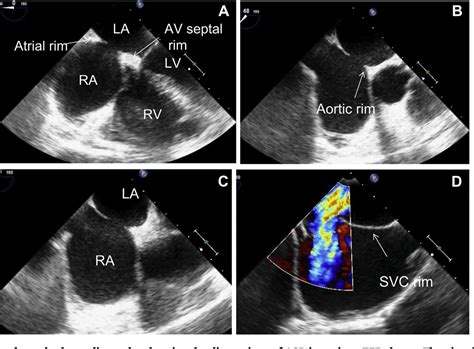lv to ra shunt | Left to Right Shunts lv to ra shunt A shunt from the left ventricle to the right atrium can occur in three ways: (1) . $10K+
0 · Stepwise evaluation of left to right shunts by echocardiography
1 · Multimodality Imaging of a Gerbode Defect
2 · Left to Right Shunts
3 · LV – RA shunt – All About Cardiovascular System and Disorders
4 · Acquired Left Ventricle to Right Atrial Shunt (Gerbode Defect
Events January–March. January 1 – Ellis Island begins processing immigrants to the United States. February 27 – Rudolf Diesel applies for a patent, on his compression ignition engine (the Diesel engine). February 29 – St. Petersburg, Florida is incorporated as a town.
Dr. Gerbode first described a left ventricle (LV) to right atrial (RA) shunt in 1958. These defects are usually congenital, but cases of acquired defects secondary to aortic or tricuspid valve endocarditis have been described. A shunt from the left ventricle to the right atrium can occur in three ways: (1) .Cardiovascular Pathophysiology: Left To Right Shunts. Ismee A. Williams, MD, MS .

The lesions such as Gerbode defect suggest LV to RA shunt and essentially lead to volume .
A transesophageal echocardiogram confirmed the presence of an LV to RA shunt .Dr. Gerbode first described a left ventricle (LV) to right atrial (RA) shunt in 1958. These defects are usually congenital, but cases of acquired defects secondary to aortic or tricuspid valve endocarditis have been described.
A shunt from the left ventricle to the right atrium can occur in three ways: (1) Defect in the atrioventricular septum between the septal attachments of the mitral and tricuspid valves (2) A perimembranous ventricular septal defect (VSD) with associated fenestration of the septal tricuspid leaflet so that the VSD jet is partly directed from the .
Cardiovascular Pathophysiology: Left To Right Shunts. Ismee A. Williams, MD, MS [email protected]. Learning Objectives. Learn the relationships between pressure, blood flow, and resistance. Review the transition from fetal to mature circulation.The lesions such as Gerbode defect suggest LV to RA shunt and essentially lead to volume overload of the RA and the RV. In such cases the RA dimensions and features of right atrial volume overload need to be looked at. A transesophageal echocardiogram confirmed the presence of an LV to RA shunt consistent with a Gerbode defect (Figure 1B and 1C). To further define shunt anatomy and to quantify the shunt ratio, cardiac MRI was performed.
Left ventricular to right atrial (LV–RA) shunt is an unusual type of ventricular septal defect (VSD). This article concentrates on acquired LV–RA shunts, which may be due to complications of cardiac operation, endocarditis, trauma or myocardial infarction. Endocarditis has been shown to cause LV-RA shunt by reopening a congenital defect, widening a small, insignificant shunt or by destructive perforation of the septum [51], [71]. For endocarditis patients with fever and septicemia, these general symptoms may mask a new shunt, making it easy to miss [9] .Congenital left ventricular to right atrial (LV-RA) shunt (Gerbode defect) is rare, while acquired LV-RA shunt has been increasingly reported. As yet, systematically incorporated data of the LV-RA shunt have not been presented.
Left ventricular to right atrial (LV-RA) shunt is an unusual type of ventricular septal defect (VSD). This article concentrates on acquired LV-RA shunts, which may be due to complications of cardiac operation, endocarditis, trauma or myocardial infarction. A case of a perimembranous VSD with a left ventricular–to–right atrial (LV-to-RA) shunt, which was misinterpreted as a tricuspid regurgitation (TR) jet on preoperative transthoracic echocardiography (TTE), is reported.Dr. Gerbode first described a left ventricle (LV) to right atrial (RA) shunt in 1958. These defects are usually congenital, but cases of acquired defects secondary to aortic or tricuspid valve endocarditis have been described.
A shunt from the left ventricle to the right atrium can occur in three ways: (1) Defect in the atrioventricular septum between the septal attachments of the mitral and tricuspid valves (2) A perimembranous ventricular septal defect (VSD) with associated fenestration of the septal tricuspid leaflet so that the VSD jet is partly directed from the .Cardiovascular Pathophysiology: Left To Right Shunts. Ismee A. Williams, MD, MS [email protected]. Learning Objectives. Learn the relationships between pressure, blood flow, and resistance. Review the transition from fetal to mature circulation.
The lesions such as Gerbode defect suggest LV to RA shunt and essentially lead to volume overload of the RA and the RV. In such cases the RA dimensions and features of right atrial volume overload need to be looked at. A transesophageal echocardiogram confirmed the presence of an LV to RA shunt consistent with a Gerbode defect (Figure 1B and 1C). To further define shunt anatomy and to quantify the shunt ratio, cardiac MRI was performed. Left ventricular to right atrial (LV–RA) shunt is an unusual type of ventricular septal defect (VSD). This article concentrates on acquired LV–RA shunts, which may be due to complications of cardiac operation, endocarditis, trauma or myocardial infarction. Endocarditis has been shown to cause LV-RA shunt by reopening a congenital defect, widening a small, insignificant shunt or by destructive perforation of the septum [51], [71]. For endocarditis patients with fever and septicemia, these general symptoms may mask a new shunt, making it easy to miss [9] .
Congenital left ventricular to right atrial (LV-RA) shunt (Gerbode defect) is rare, while acquired LV-RA shunt has been increasingly reported. As yet, systematically incorporated data of the LV-RA shunt have not been presented.Left ventricular to right atrial (LV-RA) shunt is an unusual type of ventricular septal defect (VSD). This article concentrates on acquired LV-RA shunts, which may be due to complications of cardiac operation, endocarditis, trauma or myocardial infarction.
Stepwise evaluation of left to right shunts by echocardiography
Multimodality Imaging of a Gerbode Defect
Left to Right Shunts
$4,089.00
lv to ra shunt|Left to Right Shunts
























